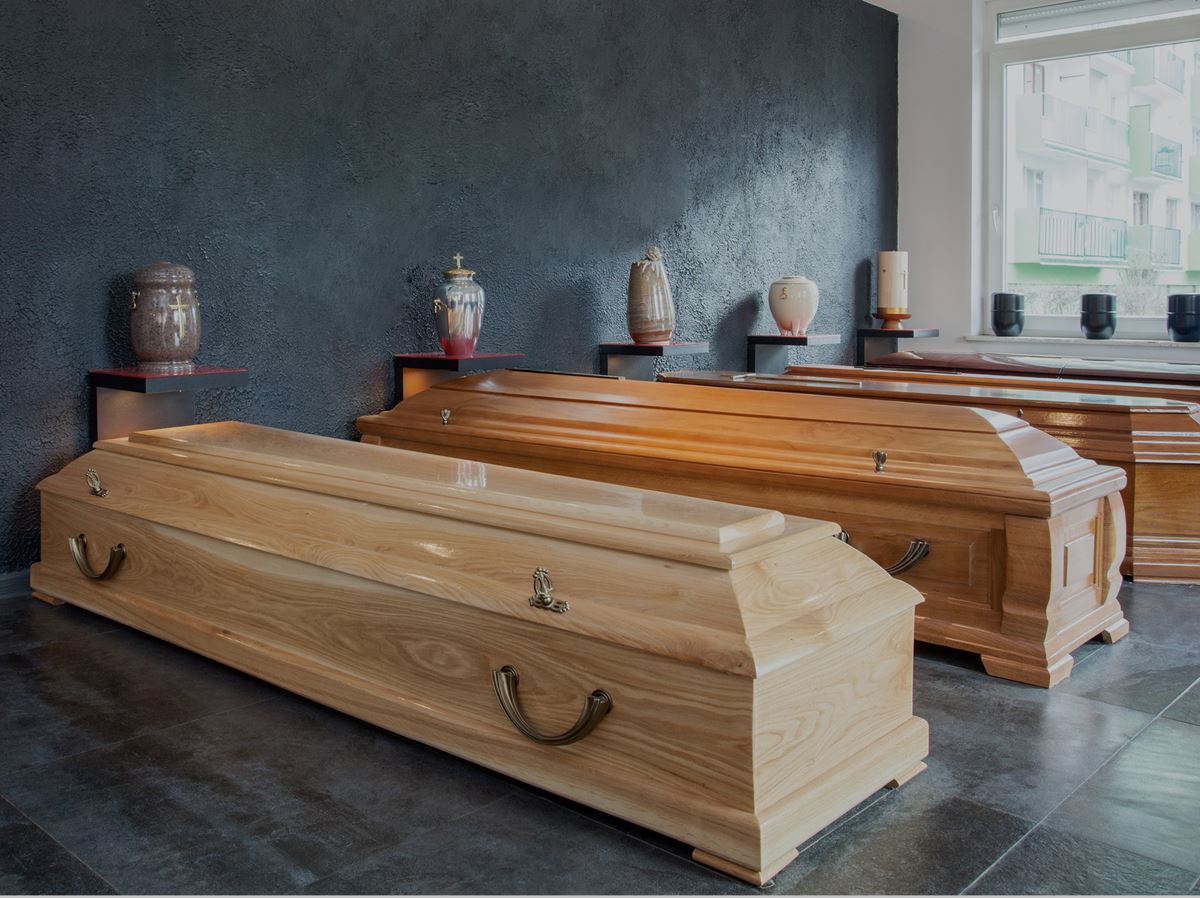
Materials used in environmentally friendly coffins
Published on January 30, 2017
- Services
- Prearrangements
- Rituals
- Eco-friendly
Environmentally minded people do not want to pollute any more after their death than they did while they were living. However, selecting a coffin made of exotic wood or metal means that a traditional burial can be very harmful to the environment. The manufactures are aware of this, and for many years have offered more and more environmentally friendly models of coffins that are made without metal carrying handles. Choosing certain materials ensures the sustainability of natural resources without compromising the quality and durability of the coffin whatsoever.
Undecorated Wood Coffins
Relatives of a deceased environmentally conscious person will immediately avoid choosing a metal coffin like bronze, rare wood, or a one that has been stained with epoxy. They will more naturally favour wooden models like poplar, which are stained with lacquers and other natural products. Glues used in coffin manufacturing must be environmentally friendly and the most popular model made in Quebec has an organic cotton inner fabric and is devoid of any metal parts or chemical products. You can also opt for a coffin made by a supplier participating in a reforestation program.
Environmentally Friendly Cardboard Coffins
Making coffins from cardboard has been a very popular process in the Nordic countries for more than 30 years. This is attractive to environmentally minded people and is the reason why cardboard is beginning to become more widely used in the rest of the world’s developed countries. In fact, these coffins do not look like large cardboard boxes, as the cardboard material is in fact a mixture of cellulose, wood powder and recycled paper fibres, as well as Kraft pulp. Of course, no solvent or metal is used in the manufacturing process. The advantage of these coffins is that they easily decompose within a year. They can be used for traditional burials, and are also widely used for cremations, as they do not pollute the atmosphere during the cremation process. Using cardboard also prevents using wood and preserves the forests.
Other Materials Used to Make Environmentally Friendly Coffins
Bamboo is renewable and grows back without being replanted, so coffins can be made from it while preserving the planet. It is solid and more durable than maple or red oak, and it comes in a woven finish or is charred, giving it a caramel colour. There are also other lesser-known materials used to manufacture environmentally friendly coffins. These include sea grass, paper mâché, sand or wicker.
The Importance of Coffin Finishes
Don’t forget that finishes must also be reconsidered to ensure the coffin is completely environmentally friendly. This means that metal handles should be replaced by wooden or rope handles, as well as devoid of any toxic products containing plastic, acrylic or any such synthetic polymer material. Furthermore, coffins should be trimmed with materials that are produced in a sustainable, environmentally friendly manner, or made from recycled materials that are produced in the region. The lining must also be made only from certified organic materials, and the varnishes replaced using water-based finishes with a much lower impact on the environment.
Protecting the environment has become a priority for most Quebecers who are beginning to change their habits in order to adopt a more environmentally friendly, more responsible attitude. It is therefore not surprising given the shift in Quebecer’s mindsets towards greener products that the funeral industry is moving to provide more environmentally friendly coffins, as well as urns, funerals and even cemeteries.